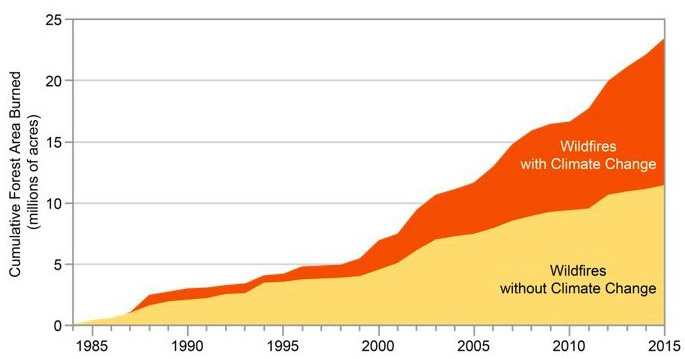
The Bureau of Land Management will open a 30-day period during which it will accept public comments on their plans to remove some steps that are required before cutting timber following a fire.
The agency intends to no longer require Environmental Impact Statements or Environmental Assessments on what they call “salvage” operations of less than 5,000 acres — cutting dead or dying trees which can result from insects or wildfires. They would use a Categorial Exemption (CX) to skip some environmental review steps that are usually required.
The BLM’s press release about their plans did not include information about how the public could comment, just that, “[A] a public comment period on the proposed CX closes 30 days after the proposal publishes in the Federal Register. The BLM will provide additional information about when and how to comment when the proposed rule is published. ”
Their press release saw no issues with their planned accelerated timber cutting operations:
The BLM has completed a review of scientific literature and previously analyzed and implemented actions and found no evidence that salvage harvest at the levels proposed would have a negative effect on forest health. To the contrary, removing dead and dying trees can accelerate forest succession and benefit native wildlife species that rely on successional habitat, while reducing the potential for catastrophic wildfires.
An opposing point of view is in a paper written by D.B. Lindenmayer and R.F. Noss, titled “Salvage Logging, Ecosystem Processes, and Biodiversity Conservation.” It was in Conservation Biology, Volume 20, No. 4, August, 2006.
Here is an excerpt:
“Discussion
“Some of the impacts we have outlined may be different from or additional to the effects of traditional forms of logging that are not preceded by large, natural disturbance events. This is because the conditions preceding, during, and after salvage logging may differ from those in areas subject to traditional logging. Moreover, the ecological benefits derived from large-scale disturbances (such as the creation of charred trees and coarse woody debris) can be lost or severely diminished by salvage operations for decades and even centuries (Lindenmayer & Ough 2006). These problems have often been overlooked or poorly understood by conservation biologists, foresters, and other natural resource managers. In some cases salvage impacts may have been so substantial that past interpretations of ecosystem responses to natural disturbance may need to be reexamined. That is, ecosystem processes and biotic responses may have been more influenced by salvage logging than by the initial natural disturbance event. This may be true for hydrological regimes in the northeastern United States following the 1938 hurricane (Foster et al. 1997), aquatic macroinvertebrates in the western United States (Minshall 2003), and arboreal marsupials in the forests of Victoria, Australia, after the 1939 and 1983 wildfires (Lindenmayer et al. 1997).
“Whereas most documented effects of salvage logging are negative from an ecological standpoint, others can be neutral or positive, depending on the response variables measured. Effects are likely to vary over time and among and within vegetation types in response to the type, intensity, and periodicity of natural disturbance and disturbance by salvage logging. Therefore, there can be no generic recipes for salvage logging that can be uncritically applied in all landscapes.
“Perhaps one of the problems associated with the lack of appreciation of the impacts of salvage logging lies in the terminology itself. Dictionary definitions of the term salvage associate it with “recover or save” or “saving of anything from loss or danger” (e.g., Delbridge & Bernard 1989). Although salvage logging removes wood from burned areas, such practices generally do not help regenerate or save ecosystems, communities, or species (but see Radeloff et al. 2000) and often have the opposite effect. Hence, in many respects, the term salvage is inappropriate and misleading from ecological and conservation perspectives. An alternative term might be postdisturbance logging.”








